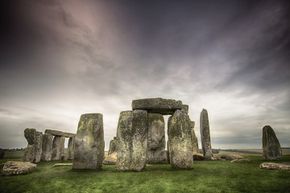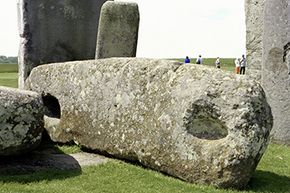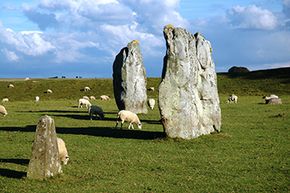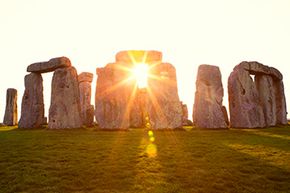Eight miles (13 kilometers) north of Salisbury in Wiltshire, England, U.K., lies Stonehenge — an enormous circle of stones. It's an ancient monument that was of great significance to the people who erected it. Unfortunately, we don't know what that significance was, nor do we know much about the prehistoric people who built it. The mystery of Stonehenge has intrigued us for centuries, but until the 20th century, we didn't even know how old the whole thing was.
But every visitor knows the obvious: The society responsible for it went to a lot of trouble to put it up. It clearly required planning, organization, cooperation and manpower.
Advertisement
Archaeologists now estimate that an ancient society transported the stones from a great distance and erected the larger stones between 2620 and 2480 B.C.E. [source: Pearson]. It's still a mystery how these Britons transported such large stones, especially before the invention of the wheel. Experts have proposed several theories as to how humans could have transported the stones from so far, including the use of log rollers, stone ball bearings, or small rocks and rotation, or even wicker cages [source: Cohen].
But we also know that these stones are just one piece of the puzzle. Stonehenge sits in the middle of an older archaeological site consisting of a ditch and bank. Here, archaeologists have found cremated remains of more than 60 humans, in addition to some unburned human bones and many animal remains [source: Pearson]. Plus, this site is just one of many important ancient finds across the surrounding landscape, which was dotted with other monuments centuries ago.
To put the story in context, keep in mind that the Egyptians erected their famous pyramids during the same centuries in which the Britons erected Stonehenge. Civilizations were flourishing in the Middle East, but Britons remained in the Stone Age (specifically, the Neolithic, meaning New Stone Age) as the technology of metalworking slowly crept farther into Europe. Although these Britons weren't primitive hunter-gatherers (they were farmers who lived on barley and wheat), they probably valued the open valley where Stonehenge stands as a convenient hunting ground.
A wealth of new research over the past 15 years has unlocked new secrets to Stonehenge and its place among other long-vanished monuments. First, let's examine the monument itself.
Advertisement





